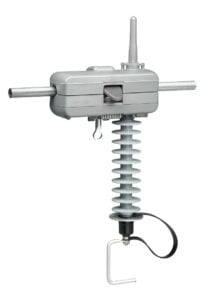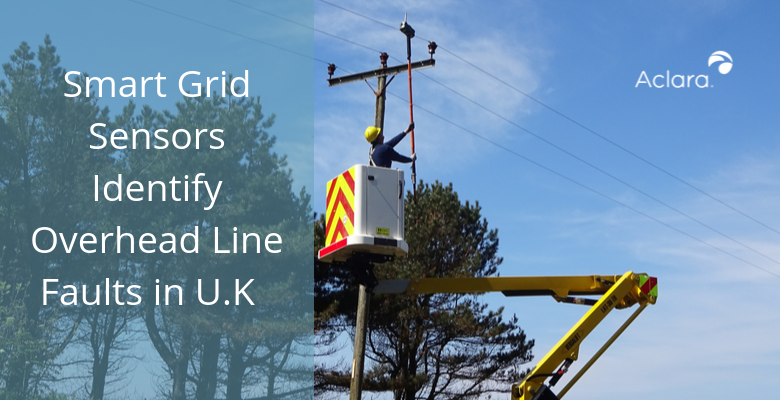Two innovation programs funded by the UK’s Office of Gas and Electricity Markets (Ofgem) — the Network Innovation Allowance (NIA) and Low Carbon Networks Fund – are critical in that they support technology programs that help utilities improve their financial positions and implement cost-effective low-carbon initiatives.
Aclara has participated in three Ofgem funded projects supported by these programs with:
-
Western Power Distribution (WPD)
-
UK Power Networks
-
Community Energy Scotland
These projects include the use of Aclara’s Grid Monitoring platform with smart grid sensors and are important to UK consumers because they will help keep the costs of energy delivery down, improve network reliability and combat global climate change by reducing the UK’s carbon footprint.
Transient Faults Identified Quickly
UK Power Networks is the UK’s largest distribution network operator, serving London and the east and southeast regions of England. UK Power Networks is constantly assessing ways to reduce the number of power outages and outage durations on its network. The utility recently concluded a project with Aclara to assess new tools and operational processes as part of its efforts to continuously improve network performance and reliability.
The scope of the project was to address time spent searching for overhead line faults, reduce the duration of outages, and to identify indicators of developing faults in the network. Initially, the project included monitoring of 11kV overhead lines, but the technologies used are similarly applicable to 33kV networks.
UK Power Networks has more than 46,000 km, or 28,500 miles, of overhead line networks that can occasionally be damaged by high winds, bird strikes, tree contact and other causes. With many long circuits, patrolling lines and using traditional methods to locate faults can be extremely time consuming. Before resulting in sustained outages, many developing issues may cause short power interruptions known as transient fault outages. Transient events typically include short variations of fault current without causing a sustained power outage. Transient events that are cleared automatically by very short interruptions from breakers or reclosers are referred to as momentary fault events. Learn more about why transient faults matter and how to minimize them
The project deployed the Aclara Grid Monitoring Platform, installing several hundred power sensors and related software with Predictive Grid® Analytics. The solution reduces the time spent searching for overhead line faults, decreases the duration of outages and increases the ability to detect developing faults.
Fault Current and Voltage Reported
When fault current triggers are detected, the power sensors capture and report both the fault current and voltage waveforms. By comparing the calculated fault level using a planning tool, likely fault locations can be identified. Network control and operational staff who have access to the software can direct linesmen to likely fault locations, reducing the time to locate the fault.
To reduce delays in dispatching operational staff, a DNP3 link between Aclara software and UK Power Networks’ Advanced Distribution Management System (ADMS) was developed. Each event is stored in the Aclara software and is compared to the event log in the ADMS. Each time an auto-reclose event occurs, operational staff can now get a prediction of likely fault locations.

This capability has reduced the length of overhead line patrolled by as much as 80%. For some events, trees close to the lines have be identified and cleared to avoided future supply interruptions.
During the project, Aclara developed a fault impedance calculator algorithm which takes the waveforms as inputs and outputs a fault impedance. The algorithm has been used for permanent and transient faults and results have been with 500 meters of the actual location. Preliminary field tests have shown promising results for fault impedance to improve fault location accuracy, including for high impedance sources of faults. Read this article to learn more about how to use artificial intelligence in utility operations.
The combination of information from the power sensor and fault indicators has reduced the number of locations and lengths of overhead line patrolled, saving between 30 minutes to several hours. The approach has also reduced the number of times a fault may be re-energized during the location process.
The power flow and fault events are providing information that was not previously available using traditional primary substation monitoring. Changes in the direction of power flow due to distributed generation can also be clearly seen. The project has aided in development of deployment strategies to reduce customer minutes lost on overhead line circuits. For several events, the magnitude of fault current has been used to identify possible incipient HV cable fault locations. For one fault event, the fault location prediction was within three spans of the fault.
The project has also demonstrated that developing or “incipient” faults can be reliably detected. The measured fault current of a momentary auto-reclose event has been compared with the prospective short circuit currents and sections of overhead line were identified as having trees just touching the line in the wind and avoided a permanent supply interruption. The power sensors have also been able to capture short duration “incipient” faults (less than 10ms) which are indicative of future underground cable faults.
Meeting Renewable and Low-Carbon Mandates
The energy mix in the United Kingdom is changing quickly to meet low carbon initiatives and mandates. Community Energy Scotland and WPD are expecting changes in the way electricity flows through their distribution network as consumers adopt more low-carbon technologies, including electric vehicles and renewable generation sources. Read more on how WPD is transitioning to a Low Carbon Future
Community Energy Scotland was formed in 2007 as a member-based charity, comprising over 300 community and 150 associate business members. Community Energy Scotland aims to assist local communities to build their resources and resilience, through ownership of local renewable generation and associated energy services. The utility installed smart grid sensors as part of its ACCESS (Assisting Communities to Connect to Electric Sustainable Sources) project, which is designed to drive financially viable grid connections for smaller scale electricity generators.
“Community Energy Scotland will assist a number of community energy groups in the Inner Hebrides experiencing constrained local grids to procure these sensors.” said Benny Talbot, development officer local energy economies, Community Energy Scotland. The smart grid sensors will provide real-time monitoring of power flows on the local grid and should allow the community groups to work with the local District Network Operators to explore ways to safely bring on and control new community-owned renewable generation.”
As one of seven DNOs in the United Kingdom, WPD is responsible for delivering electricity to the Midlands, South Wales, and the South West in a 55,500 square kilometer territory that services nearly 8 million consumers. The project, which was begun by the smart grid business of Tollgrade before it was acquired by Aclara, supplied overhead line sensors to WPD as part of WPD’s FALCON (Flexible Approaches to Low Carbon Optimised Networks) project, a £16 million (about $20 million U.S.) Ofgem funded program that aims to improve the industry’s understanding of infrastructure needs in a low-carbon environment. The project demonstrated the value proposition of monitoring the distribution network to better understand how the network could adapt when renewables are introduced and to understand how to get more capacity out of the current infrastructure.
Download Our White Paper on Predictive Grid Analytics.

